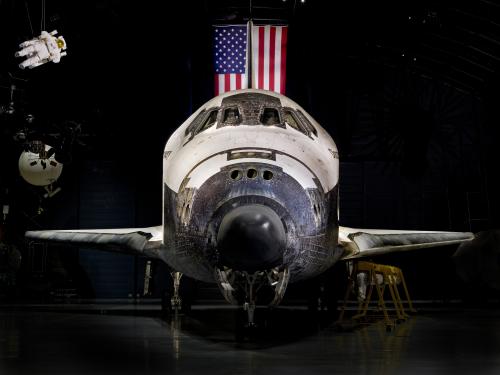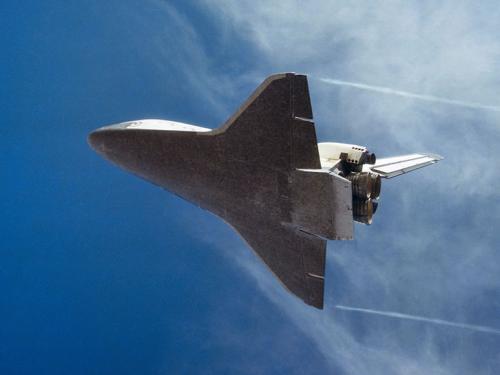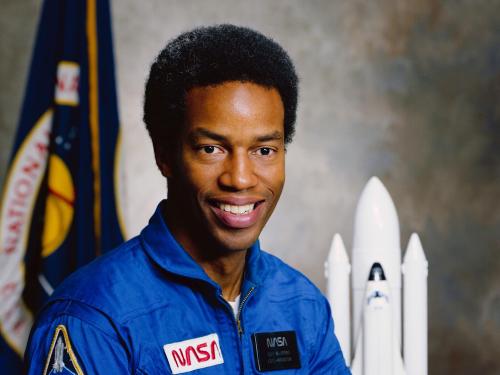
Stories of daring, stories of technological feats, stories of prevailing against the odds ... these are the stories we tell at the National Air and Space Museum. Dive in to the stories below to discover, learn, and be inspired.
Showing 1 - 10 of 78

March 20, 2025
A look at the NASA's manned maneuvering unit (MMU) in detail.

August 30, 2024
In total, six of unique Space Shuttle orbiters were built but Discovery stands out with the greatest flight history record: 39 missions and 365 total days spent in space. That’s quite a feat for the journeys the orbiter took, but it’s also a testament to the team that made each of those flights possible. On its 40th anniversary, Discovery’s curator Jennifer Levasseur takes a look at features that distinguish the vehicle from the other orbiters and looks back on its first flight and crew.

July 25, 2024
Maj. Gen. Joe Engle's experiences as a test pilot of both the X-15 aircraft and Space Shuttle orbiters Enterprise, Columbia, and Discovery made him the first person to ever fly two winged vehicles to space, amongst his many noteworthy achievements. The Museum was most honored to host him as the earliest Space Shuttle commander to attend the arrival ceremony of Discovery at the Steven F. Udvar-Hazy Center in 2012.

July 16, 2024
It is perhaps one of the best-known images of the 20th century. Floating free against the velvety blackness of space was Bruce McCandless II. What is perhaps less well-known was the fact that, underneath the gold visor of his helmet, McCandless was wearing glasses.

June 20, 2024
What's new in Aviation and Space

May 24, 2024
When NASA astronaut Ellison Onizuka rode Space Shuttle Discovery into space on shuttle mission STS-51-C in 1985, he made history on several counts. He was the first Asian American astronaut, the first astronaut of Japanese descent, the first person from Hawai‘i in space, and the first Buddhist in space. His second space flight occurred just a year later in 1986 when Space Shuttle Challenger launched on STS-51L.

March 14, 2024
Few people in the air and space community touched as many aspects of what we do here at the Smithsonian’s National Air and Space Museum as did Richard H. Truly. His remarkable career in the military, in space, and as a leader blended together an array of experiences, having had the opportunity to impact programs and make decisions, the effects of which linger to this day.

October 13, 2023
As a physicist, engineer, entrepreneur, and astronaut, Franklin Chang-Díaz has made significant contributions to space exploration. Born in San José, Costa Rica, he developed a passion for science and space at an early age. He moved to the United States to continue his education and achieve his dream of becoming an astronaut and in 1980, NASA selected Chang-Díaz as an astronaut candidate, making him the first Latin American immigrant to become a NASA astronaut.

September 20, 2023
A new book by NASA astronaut Tom Jones shares intriguing stories about the agency’s longest-running space exploration program

August 30, 2023
Dr. Guy Bluford launched on the STS-8 mission on August 30, 1983, becoming the first Black American in space. Bluford served as a mission specialist and his jobs were to deploy an Indian communications-weather satellite, perform biomedical experiments, and test the orbiter’s 50-foot robotic arm.